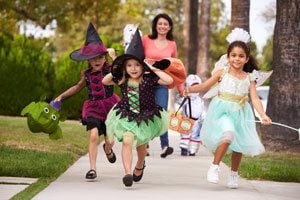Be extra vigilant on Halloween
Melissa Hjelle, Injury Prevention Specialist
CentraCare Health
 Did you know that children are twice as likely to be hit by a car and killed on Halloween than on any other day of the year? According to a Centers for Disease Control study, the potential for automobile-related crashes with young pedestrians increases four times on Oct. 31.
Did you know that children are twice as likely to be hit by a car and killed on Halloween than on any other day of the year? According to a Centers for Disease Control study, the potential for automobile-related crashes with young pedestrians increases four times on Oct. 31.
When the streets are crawling with ghosts and goblins, drivers need to be extra cautious. Keep these tips in mind:
- Anticipate heavy pedestrian traffic.
- Popular trick-or-treating hours are 5:30-9:30 p.m. so be especially alert for kids during those hours.
- Turn your headlights on earlier in the day so you can spot children from greater distances.
- Slow down and be especially alert in residential neighborhoods. Children are excited on Halloween and may move in unpredictable ways.
- Take extra time to look for kids at intersections, on medians and on curbs.
- Broaden your scanning by looking for children left and right into yards and front porches.
- Enter and exit driveways and alleys slowly and carefully.
- Don’t pass stopped vehicles. The driver might be dropping off children.
- Remember that costumes can limit children’s visibility and they may not be able to see your vehicle.
- Eliminate any distractions inside your car so you can concentrate on the road and your surroundings.
- If you are dressed in a costume, don’t wear your mask while you are driving.
- Communicate with other drivers. Always use your turn signals. And if you have to pull over to drop off or pick up your kids, turn on your hazard lights.
- Watch for traffic jams. In many areas, people drive their kids into subdivisions and let them out to walk from house to house. Usually parents drive behind. This can cause confusion as kids dart between cars on the streets going from house to house. Drivers already are distracted because they are trying to keep an eye on their own kids and usually aren’t paying attention to much else.
- If you are driving children around, make sure they are buckled up in child safety seats or vehicle seatbelts, each and every time they enter the vehicle.